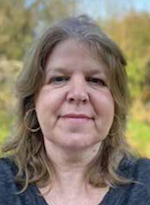Date: 22 October 2021

Then as now, there was a focus on the need to find permanent homes for the children who waited the longest including children with disabilities, siblings, older children and children from Black and ethnic minority groups. We were constantly looking to find new ways of identifying potential matches.
CoramBAAF ran the Adoption Register and had done so for some years so were aware of the large numbers of children waiting to be matched. In the US, some places had been using a model of Adoption Activity Days, arranging play dates for children waiting to be adopted where approved adopters came and spent time with the children. After the event the adopters could express an interest in a child and explore the potential match in detail with their social worker. There was evidence that many children were placed from these adoption activity days.
A member of staff from CoramBAAF spent time in the US learning about Adoption Activity Days. Returning to the UK funding was agreed to trial a pilot project. An Adoption Activity Day consultancy service was established.
Adoption Activity Days were not well received initially, with some local authorities expressing concerns about involving children the days and subjecting them to risk. In the end one local authority in the Midlands did agree to pilot, and as a result around a third of the children were matched.
Education Secretary, Nadhim Zahawi, speaks of the importance of Adoption Activity Days for those children who often wait the longest for a forever family
By the end of 2014, 140 local authorities were involved with Adoption activity Days and 26% of all the children who attended were subsequently matched.
The days take a considerable amount of organisation. Direct work, preparation and follow up with children was key and involvement of their foster carers and social workers was essential. Adopters too, required preparation and support, often finding the process emotional. Rules had to be strictly adhered to, no discussing children in front of them, just playing, talking to them, and interacting with them. Children’s profiles listed names, likes, dislikes and details of personality. No additional needs were listed, and no ages! Once the theme had been decided, all attendees including foster carers, children adopters and staff all required to acknowledge the theme, from full fancy dress to just a hat or coloured t-shirt. The children’s experience of the day was always the top priority.
The idea was that adopters would experience the children as children. Both adopters and children were freed from ‘paper descriptions and categories’. As a result, adopters would begin to form a connections with children they wouldn’t have considered from a paper profile. Children really are their own best advocates. Whilst they do bring histories of difficult back grounds and trauma, they are children first and foremost.
I remember, one extremely charismatic three year old spent a whole afternoon playing with his prospective adopters who never originally would have considered adopting a child with Down Syndrome. They went on to successfully adopt him. Even children who were much quieter often had special moments, however small, where connections were made. A five year old little boy said to me he found the day great because he never realised there were other children waiting for their ‘forever home’ the same as him, he had made friends with another boy, and their foster carers subsequently supported them to meet up.
For staff the day was long and complicated, including wearing whatever themed costume we had dreamed up - Disney characters, jungle, superheroes. Regrets about big unmanageable outfits soon became apparent!
Adopters found the days emotionally challenging, sometimes overwhelming and often exhausting. But the days were, and are, definitely worth it to see some of our children waiting the longest find their permanent homes.
Modern versions of Adoption Activity Days include shorter play dates and smaller groups, but the premise remains the same, to continue to pursue all potential avenues to find homes for children who wait the longest.
Jane Poore, Adoption consultant, CoramBAAF
